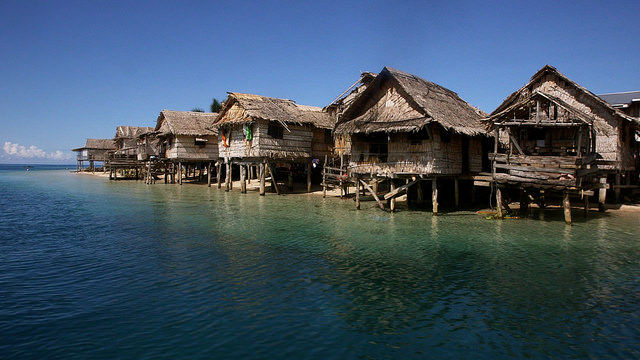
A major international conference on the Pacific Islands was held recently by the Centre for Pacific Island Countries Studies in Guangzhou, the capital city of China’s Guangdong province. The conference, devoted solely to a discussion of the Pacific Islands, was the first of its kind in China. The Centre was authorised by the highest level of the central leadership in Beijing and supported by the Guangdong provincial government. That China has appointed a special envoy for the Pacific Islands, and that the envoy, Ambassador Du Qiwen, attended a full-day conference—a true rarity for Chinese officials—only attests to the growing attention China is paying to the Pacific Islands region.
China has significantly expanded its involvement in the Pacific Islands in recent years. According to Ambassador Du, in 2013 China offered a US$2 billion concessional loan and a $US2 billion special loan for infrastructure development to regional governments. In 2015, despite sluggish growth in global trade, total trade between China and the Pacific Island countries reached US$8.1 billion, a 60% increase from the previous year. China’s also trained over 4,000 personnel from the region in managerial and technical expertise, and has offered more scholarship and training opportunities for such capacity building.
Some Australian strategists have been wondering whether China’s political and economic expansion in the South Pacific comes at Australia’s expense as the region’s main power. Canberra likes to see itself as having a special responsibility for the South Pacific. More generally, Australia is said to have a strategic imperative to prevent a hostile power from establishing a foothold in the region, to threaten the Australian mainland or the access to sea routes through the region’s maritime commons. As a result, some are concerned that China’s expansion is undermining a key geopolitical objective of Australian foreign policy.
But that worry is premature. China’s policy toward the Pacific isn’t driven by a presumed strategic competition with Australia or the US. Its growing involvement is best seen as part of the much larger ‘Going Out’ strategy to expand China’s outreach to the developing world. Since 2013, Beijing has reframed its regional approach under the ‘One Belt, One Road’ initiative. The South Pacific, like Australia, is included in the 21st Century Maritime Silk Road that Beijing has proposed to build in concert with other countries.
Within that broad policy framework, China has several specific interests in the South Pacific. The first is purely economic. China’s state-owned enterprises (SOEs) have invested in energy resources, raw materials and increasingly in infrastructure. It is, however, a mistake to view the search for natural resources as the main driver of China’s involvement. As Ambassador Du points out, if resources were the only objective, China would be well advised to abandon the South Pacific and focus simply on Australia. With the exception of Papua New Guinea, the South Pacific holds little significance for China in terms of resources.
China’s official position is that Beijing is trying to achieve ‘win-win’ cooperation with Pacific Islanders in economic development, as it befits China’s identity as a rising developing country to assist development in the Global South. Whether ‘win-win’ cooperation is being achieved is an empirical question. But it seems clear that China’s economic relationship with the South Pacific isn’t an exploitative relationship. In most cases, regional governments and citizens welcome Chinese involvement, because they see this as providing an important alternative to Western-style development aid. Tony Browne, a former New Zealand ambassador to China, has observed that China is making a major contribution by investing in infrastructure projects in which no other power has any interest.
China also has a stake in limiting Taiwan’s political reach in the region. Six Pacific Island states still recognise Taiwan today. With a new pro-independence government in Taipei since May this year, competition with Taiwan for political allegiance may assume more prominence than in previous years.
But whether it’s economic interest, competition with Taiwan, or political influence, China’s goals don’t clash with Australia’s interest in having a stable and prosperous region free from the control of a hostile external power.
In fact, it’ll be in Australia’s interest to seek a creative and productive partnership with China to bolster regional stability and development. For all the inroads and contributions China has made to the South Pacific, there are still issues and problems to be managed and resolved. In terms of SOEs as agents of Chinese expansion, those include unbridled self-interest, lack of attention to the environment, poor labour practice and corruption. On the level of government policy, Beijing needs to evaluate aid projects on the basis of its practical contribution to local societies rather than its political symbolism.
Both China and Australia have a lot to learn from each other in delivering better development aid to the Pacific Islands, and neither (nor, for that matter, any other external power) should be complacent about its current approach. The Pacific Islanders are gaining a new confidence partly as a result of the new opportunities China’s involvement is bringing. They’re thinking not only about the need to ‘feed and tame the dragon’, but also the need to ‘train the dragon to tame the kiwi, the kangaroo and the bald eagle’.

